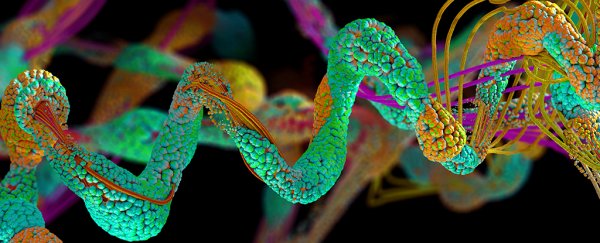A new study has come up to point us towards the origin of life. It has identified the structures of the proteins that may have made it happen.
The team started with the idea that life started from collecting and using energy. This energy would most likely have come from the skies, in the shape of radiation from the Sun, or from deep within Earth itself, as heat seeps through hydrothermal vents at the bottom of the ancient seas.
On a molecular level, this energy use means the transfer of electrons, the fundamental chemical process which involves an electron moving from one atom or molecule to another. Electron transfer is at the very core of oxidation-reduction reactions (also known as redox reactions) that are crucial for some of the basic functions of life.
Since metals are the best elements to carry out electron transfer, and the complex molecules called proteins are what drive most biological processes, the researchers decided to combine the two and search for proteins that bind metals.

A methodical, computational approach was used to compare metal-finding proteins, revealing certain common features that matched across all of them – irrespective of the protein functionality, the metal it binds to, or the organism involved.
“We saw that the metal-binding cores of existing proteins are indeed similar even though the proteins themselves may not be,” says microbiologist Yana Bromberg, from Rutgers University-New Brunswick in New Jersey.
“We also saw that these metal-binding cores are often made up of repeated substructures, kind of like Lego blocks. Curiously, these blocks were also found in other regions of the proteins, not just metal-binding cores, and in many other proteins that were not considered in our study.”
The concept states that soluble metals in the Archean Ocean that covered Earth thousands of millions of years ago could have been used to power the electron shuffling required for energy transfer and, in turn, biological life.
“Our observation suggests that rearrangements of these little building blocks may have had a single or a small number of common ancestors and given rise to the whole range of proteins and their functions that are currently available,” says Bromberg. “That is, to life as we know it.”
Specifically, the team was able to identify evolutions in protein folds that are the shapes adopted by proteins as they become biologically active, that may have produced the proteins we know today, almost like a molecular family tree project.

It was also found out that biologically functional peptides, the smaller versions of proteins, may have predated the earliest proteins which go back as far as 3.8 billion years ago.
“We have very little information about how life arose on this planet, and our work contributes a previously unavailable explanation,” says Bromberg. “This explanation could also potentially contribute to our search for life on other planets and planetary bodies.
“Our finding of the specific structural building blocks is also possibly relevant for synthetic biology efforts, where scientists aim to construct specifically active proteins anew.”
The research has been published in Science Advances.


